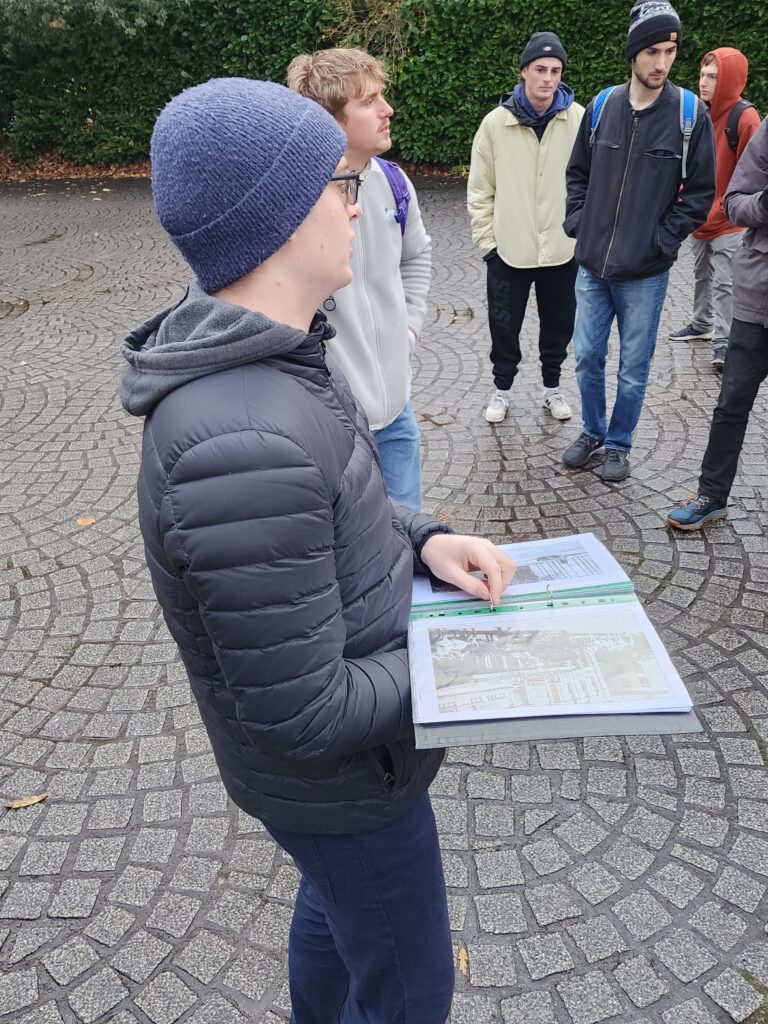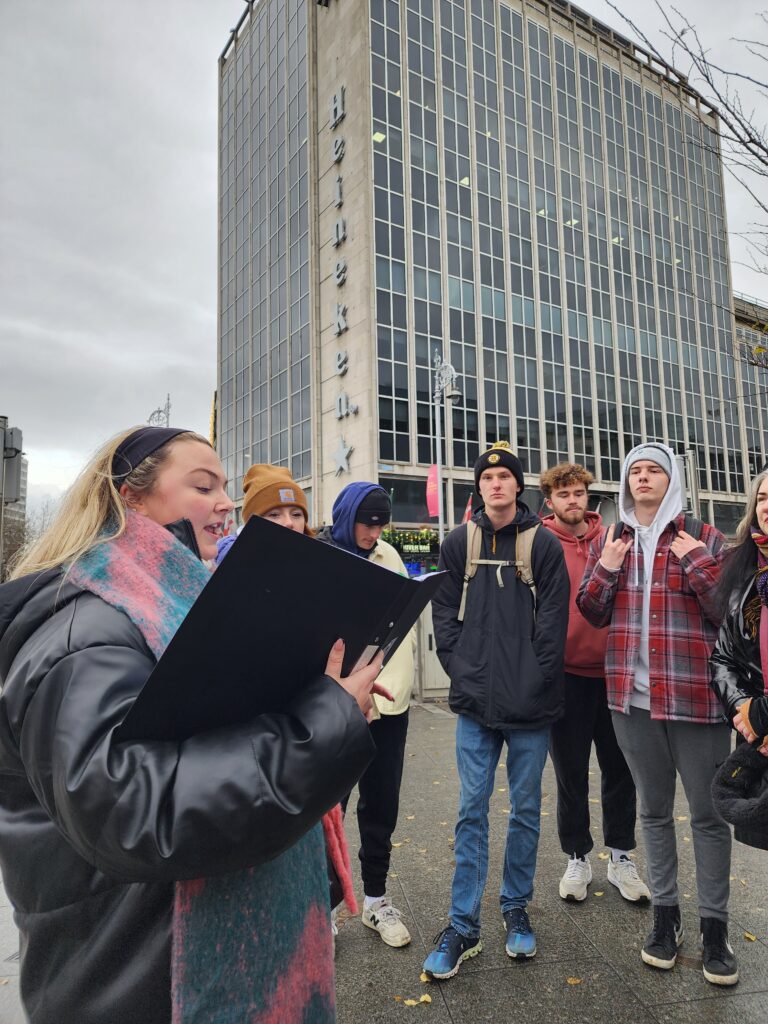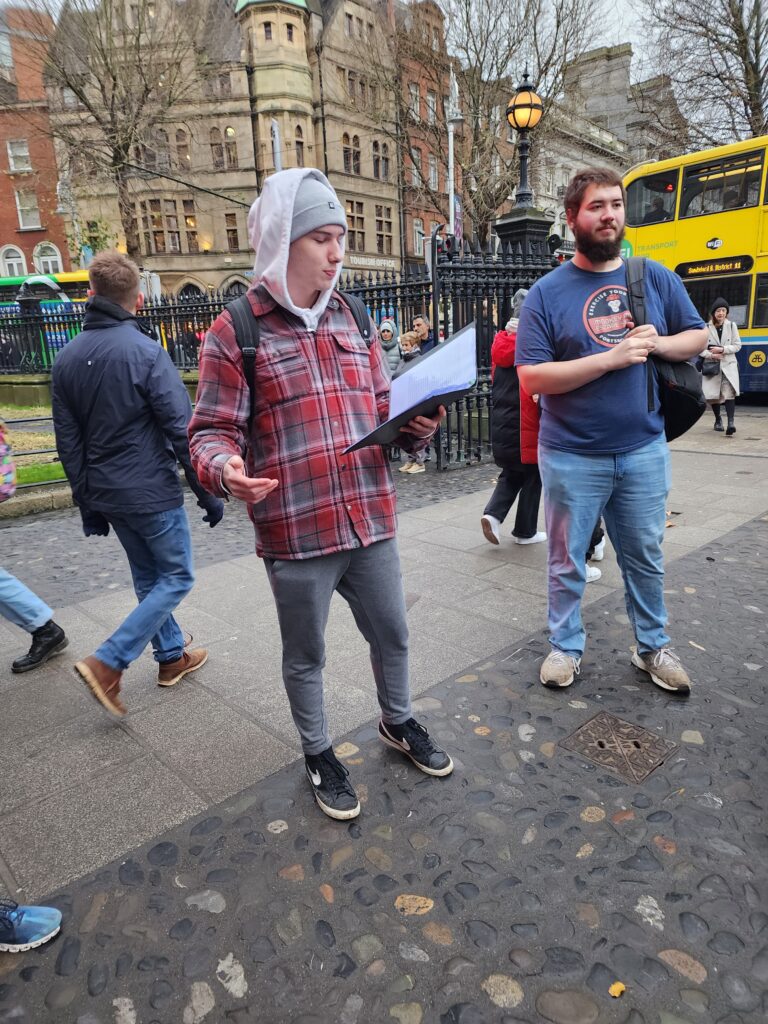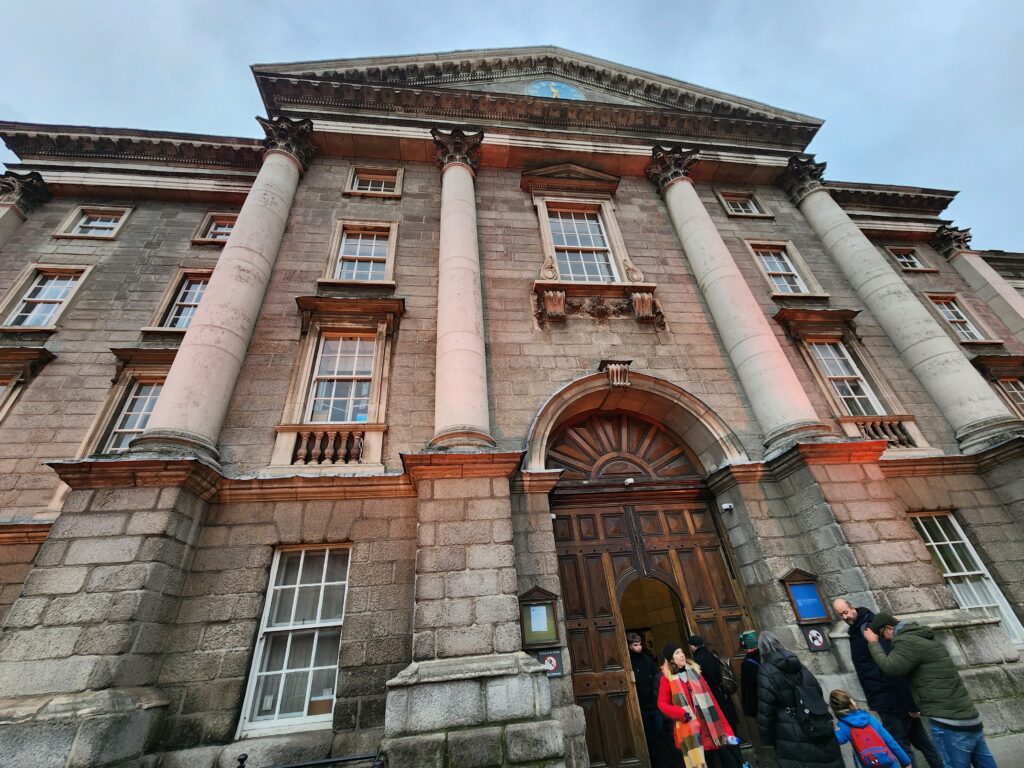Throughout our semester, we have had the privilege of learning all about the history between the Republic of Ireland, and Northern Ireland. For those who didn’t know, Ireland is divided between these two territories, where Northern Ireland is still associated with the United Kingdom, while the Republic of Ireland is apart of the European Union. While I don’t have enough writing space to explain over 800 years of why this is, I will say that up until 25 years ago, the Republic of Ireland and Northern Ireland, the North specifically, were going through what was called “The Troubles”, where due to conflict, horrific events involving the British army, subgroup bombings, and attempted assassinations grew greatly. Specifically in Belfast, located in the North, and Dublin, which is the East. While much of news covered The Troubles in Belfast, Dublin still had its fair share of struggle, which after a semester of history, my class as a final project, gave a tour which talked about some of the events felt by Dublin during The Troubles.

Virag is shown in this photo, where she explains most of the victims of the Troubles were ordinary people who were at the wrong place at the wrong time. Talking about the Sackville Place bombings, which is a prime example of lives unnecessarily lost to this senseless violence. Sackville Place is located just off O’Connell Street on the North Side of the city. Over the course of about 2 months, 4 bombs went off in the same area and claimed 3 lives. On December 1st, 1972 at 8pm, a car bomb went off just outside of Liberty Hall and injured 30 people. No one was killed, but some people were heavily injured, including a pregnant woman. When the car exploded, it flew 18ft and caught on fire, causing 6 cars around it to also catch on fire. Almost all of Liberty Hall’s windows were shattered in the explosion.
Next up we have Cole, who talked about the Shelbourne Hotel. This hotel has housed many historical people and actually played a large role in the forming of the Republic of Ireland. In 1922 Michael Collins and other revolutionaries met here to begin drafting the first constitution for Ireland. JFK also stayed here on two occasions, once with his wife in 1958 and again in 1963 when he was president. These are just some of the notable people who have stayed here but many writers, poets, and musicians such as the Rolling stones also have spent time here. This hotel became relevant during The Troubles on February 13 1976 when a 25 pound bomb was detonated on the mezzanine level along with an additional 8-11 firebombs in British owned businesses along Henry and Grafton street. Out of those 8 bombs, three targeted pubs, two targeted cinemas and the last three were aimed at various businesses. Thankfully no one was near the bomb in the hotel and the businesses hit were empty so no one was killed.


Up next we have Anna, explaining the O’Connell bridge bombing. Originally known as Carlisle House, this infamous landmark underwent a transformation into a 12-storey, 45,000 sq. ft structure. The construction was completed in 1964, and the building opened to the public a year later. While famed for its iconic Heineken sign, O’Connell Bridge House has showcased various brands throughout the years, including Sony, Coca-Cola, and even Guinness.

The most turbulent year during The Troubles was 1972, witnessing 479 casualties and violence spilling into the Republic of Ireland. On November 26, a bomb detonated outside the rear exit door of the Film Centre Cinema at O’Connell Bridge House during a late-night screening at 1:25 am. Although no fatalities occurred, 40 people were injured, some severely. This marked the first of four significant bombs that marred Dublin’s center. The fourth bomb, on January 20, 1973, claimed the life of 21-year-old CIÉ bus conductor Thomas Douglas from Stirling, Scotland, who happened to be in the wrong place at the wrong time. These bombings arguably altered the course of Irish history. No group or individual has formally accepted responsibility for the bombing. The building in the background is where Anna is talking about.
Our next speaker is Will, who talks about an active shooting which occurred at the ironic Trinity College. On the unassuming Tuesday of March 24, 1981, there was a lecture at Trinity College Dublin hosted by the Dublin’s Junior Chamber of Commerce. This lecture was led by British Businessman, Geoffrey Armstrong, the director of employee relations and services with automotive corporation British Leyland. Three balaclava-clad gunmen caused an interruption to Mr. Armstrong as one of them began to open fire on him. Armstrong was shot in both legs as three rounds were fired in the lecture room. Geoffrey Armstrong wasn’t a controversial figure, which makes this attack vary from other plotted revolutionist attacks. He simply was in the wrong place at the wrong time. Eoin Scott, the president of Trinity College Dublin Students’ Union for the 1980/1981 academic year, stated that Armstrong wasn’t a controversial figure at all. Although this event didn’t really have much significance to the Troubles, it does give outsiders an insight of how dangerous the period really was.


While there are plenty of other examples of events that had been contributed by The Troubles, helpfully this gives you some insight on the history we had the privilege of learning. Dublin is a city where no matter where you are, odds are, there is rich history just waiting to be told. This blog gave only a short version of the impact The Troubles had in Dublin, but it was much worse in Northern Ireland. The Troubles altogether lasted around 30 years. Imagine what we had to learn when our class walked us through 800 years!
